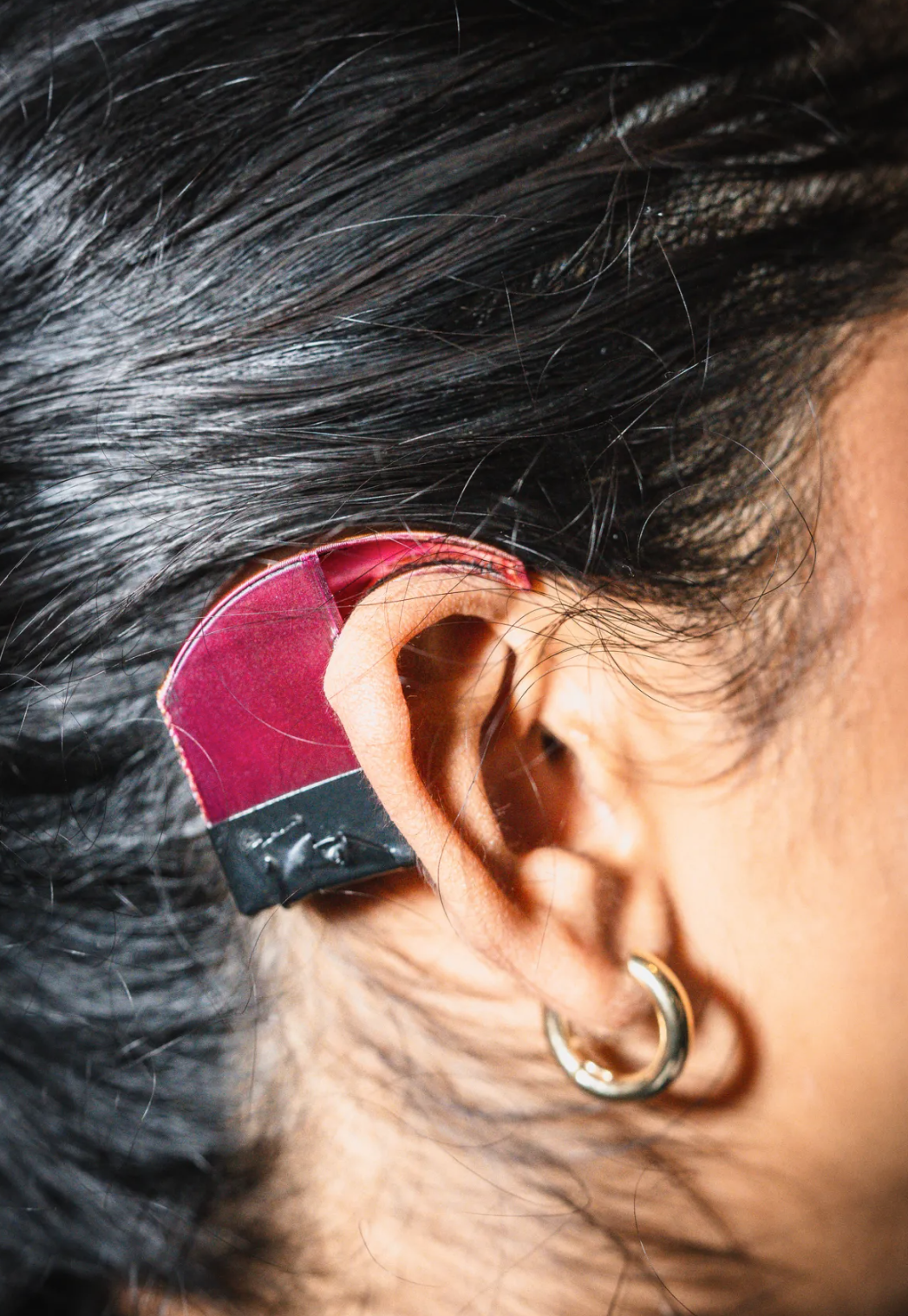Cupertino High students create award-winning seizure-monitoring device
L-R: Rising Cupertino High School seniors Vishresh Deepak, Anika Mukherjee and Nikhil Krishnaswamy are the creators of Neuropod, a device that records people’s brain activity and predicts seizures up to 30 minutes before they happen. (Anika Mukherjee via Bay City News)
Three Cupertino High School students are attempting a daunting feat: creating and perfecting a device that can help people with epilepsy, a brain disorder that causes seizures and affects more than 60 million worldwide.
The Neuropod, worn behind the ear, captures signals that detect the brain’s electrical activity and any abnormalities. (Anika Mukherjee via Bay City News)
Rising Cupertino High seniors Anika Mukherjee, Nikhil Krishnaswamy and Vishresh Deepak are cofounders of Neuropod, a device that records brain activity and predicts seizures up to 30 minutes before they happen.
Seizures, unpredictable and sudden jolts of electrical activity in the brain, can cause changes in behavior and movement, including loss of consciousness and violent convulsions. Because they cannot predict when a seizure will occur, people with epilepsy can be on edge as they go about their lives.
Those extra 30 minutes can help people physically and emotionally prepare themselves for a seizure, allowing them some piece of mind, Deepak says.
“Epilepsy is not something that can be cured; it’s just something that you can make easier for the people who have it,” Deepak says. “We want to help make their lives easier and improve their quality of life.”
While Neuropod is not currently available to the public, the trio hopes the device will be rolled out soon with enough time, testing and funding.
Neuropod, which was developed in the students’ junior year, is a small, lightweight contraption worn behind the ear. Once secured, the device captures electroencephalograph signals that detect abnormalities in the brain’s electrical activity. Users can download the Neuropod app on their phones to see the signal’s real-time visualization and analysis, which also alerts them to upcoming seizures.
The Cupertino High students’ desire to create such a device came from watching their own family members struggle with epilepsy. The disorder is not a rarity—about one in 26 people will develop epilepsy during their lifetime, according to the Epilepsy Foundation.
“It’s been difficult to see how the condition takes control of their lives,” Krishnaswamy says. “We’re hoping this is a step forward to giving them back that control.”
While monitoring devices for epilepsy are on the market and available, they are bulky and expensive, the trio says. Neuropod, on the other hand, is designed to be easy to use and affordable.
The students have received more than $1,600 in venture capital funding and research grants to develop Neuropod, which recently received high honors at the Conrad Challenge, a global STEM innovation and entrepreneurship competition supported by the Space Center in Houston, Texas; and the Maryland-based Blue Ocean Student Entrepreneurship Competition, a large virtual pitch competition for teenagers.
Last year, Neuropod was the California winner for Samsung Solve for Tomorrow, an annual science, technology, engineering and math contest sponsored by the tech conglomerate. The trio earned $12,000 in Samsung technology for Cupertino High School students.
Cupertino High School students show off their seizure-detecting device Neuropod at the Conrad Challenge in Houston, Texas in April. (Anika Mukherjee via Bay City News)
As they enter their final year of high school this fall, Mukherjee, Krishnaswamy and Deepak hope to continue improving the accuracy of Neuropod, apply for more funding and begin testing the device on people.
They’ll do it while making time to accomplish other senior year activities such as applying for college, spending time with friends and getting ready for prom.
Mukherjee says the team doesn’t mind putting in the extra hours of Neuropod work on top of school assignments and social life. The project is a labor of passion, she says, and it’s rewarding for them to see the momentum around the device grow.
“No matter how many times there were any kind of dead ends or failure, we were still motivated to keep going,” Mukherjee says. “We knew this could actually really help people.”



